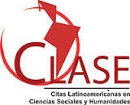Ignored communication: the radio world in a city in northern Paraná
DOI:
https://doi.org/10.5433/2176-6665.2007v12n1p271Keywords:
Radio, Mass media, SociabilityAbstract
The present article aims at delineating a general view of the current situation of the radio in Maringá city, emphasizing the characteristics of the vehicle and its major or minor utilization concerning the models used. Therefore, it can be observed that, in spite of its great presence, popularity, and the fact of being one of the unique and most efficient means of accessing abroad, considering both the policies that regulate the sector and the way the broadcasting stations are managed, it is an almost unknown and not used mean of communication in most cases.Downloads
References
DEL BIANCO, Nélia; MOREIRA, Sônia Virgínia (org.). Rádio no Brasil: tendências e perspectivas. Rio de Janeiro: EDUERJ/UNB, 1999.
FERRARETO, Luiz Artur. Rádio: o veículo, a história e a técnica. Porto Alegre: Sagra Luzzato, 2000. L
OBATO, Elvira. Igrejas têm quase 400 rádios. Folha de São Paulo, São Paulo, 10 ago. 1997.
LOBATO, Elvira. Um em cada seis congressistas tem rádio ou TV. Folha de São Paulo, São Paulo, 14 maio 1995.
MOREIRA, Sônia Virgínia. Rádio Palanque. Rio de Janeiro: Mil Palavras, 1998.
ORTRIWANO, Gisela Swetlana. A informação no rádio: os grupos de poder e a determinação dos conteúdos. São Paulo: Summus, 1985.
SCHÜTZ, Alfred. Dom Quixote e o problema da realidade. In: LIMA, Luiz Costa. Teoria da literatura e suas fontes. Rio de Janeiro: Francisco Alves, 1981.
Downloads
Published
How to Cite
Issue
Section
License
Copyright on articles published in Mediações belongs to the author(s): in the case of partial or entire republication of the original publication, we ask author(s) to indicate the original publication in the periodical.
Mediações uses the Creative Commons Attribution 4.0 International license, which allows Open Access, enabling any user to read, download, copy and disseminate its content so long as adequately referenced.
The opinions expressed by the author(s) are their sole responsibility.































